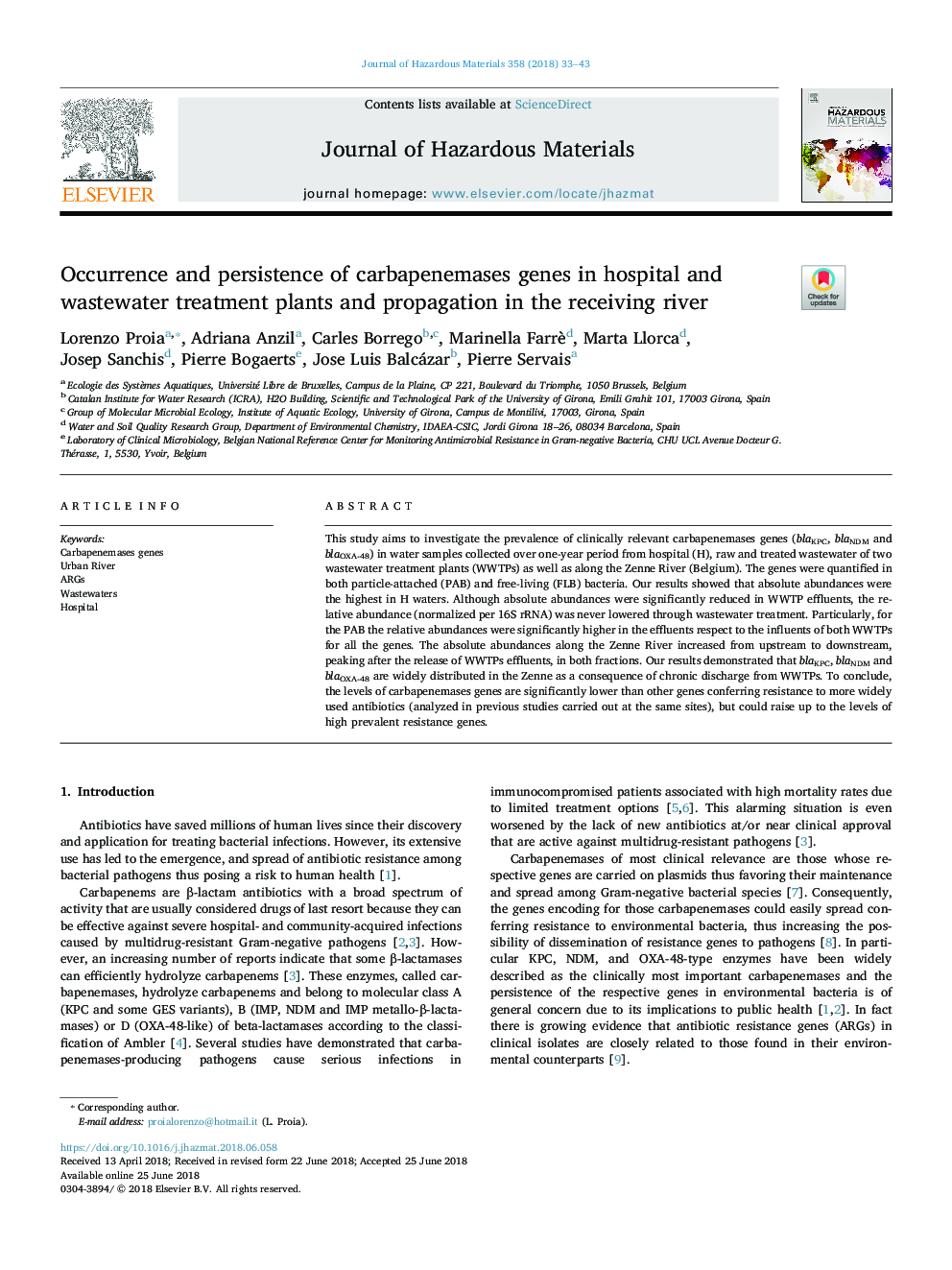| Article ID | Journal | Published Year | Pages | File Type |
|---|---|---|---|---|
| 6967914 | Journal of Hazardous Materials | 2018 | 11 Pages |
Abstract
This study aims to investigate the prevalence of clinically relevant carbapenemases genes (blaKPC, blaNDM and blaOXA-48) in water samples collected over one-year period from hospital (H), raw and treated wastewater of two wastewater treatment plants (WWTPs) as well as along the Zenne River (Belgium). The genes were quantified in both particle-attached (PAB) and free-living (FLB) bacteria. Our results showed that absolute abundances were the highest in H waters. Although absolute abundances were significantly reduced in WWTP effluents, the relative abundance (normalized per 16S rRNA) was never lowered through wastewater treatment. Particularly, for the PAB the relative abundances were significantly higher in the effluents respect to the influents of both WWTPs for all the genes. The absolute abundances along the Zenne River increased from upstream to downstream, peaking after the release of WWTPs effluents, in both fractions. Our results demonstrated that blaKPC, blaNDM and blaOXA-48 are widely distributed in the Zenne as a consequence of chronic discharge from WWTPs. To conclude, the levels of carbapenemases genes are significantly lower than other genes conferring resistance to more widely used antibiotics (analyzed in previous studies carried out at the same sites), but could raise up to the levels of high prevalent resistance genes.
Keywords
Related Topics
Physical Sciences and Engineering
Chemical Engineering
Chemical Health and Safety
Authors
Lorenzo Proia, Adriana Anzil, Carles Borrego, Marinella Farrè, Marta Llorca, Josep Sanchis, Pierre Bogaerts, Jose Luis Balcázar, Pierre Servais,
